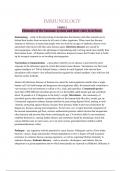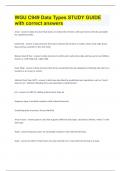Samenvatting
Summary Immunology (AB_1144) book and lecture notes, The Immune System
- Vak
- Instelling
- Boek
Immunology notes that prepare you all for the exam. Contains all the necessary information from the book "The Immune System" by Peter Parham 5th edition (fifth edition).
[Meer zien]












